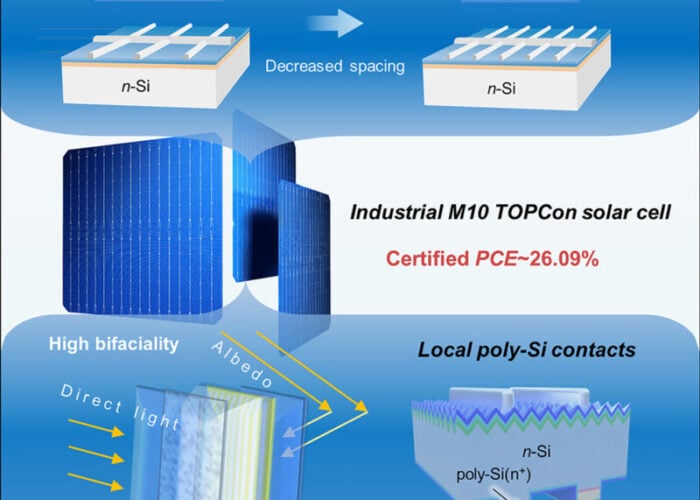
Annual investment in solar and wind generation in the Asia Pacific region could double to US$1.3 trillion by 2030 compared to the previous decade, with policy targets and cost declines boosting growth, according to research firm Wood Mackenzie.
China, Japan, India, South Korea and Taiwan are expected to be top contributors to renewables investments in the region, which is set to add an average of 140GW of solar and wind capacity each year by the end of the decade, accounting for two-thirds of total power capacity additions.
Try Premium for just $1
- Full premium access for the first month at only $1
- Converts to an annual rate after 30 days unless cancelled
- Cancel anytime during the trial period
Premium Benefits
- Expert industry analysis and interviews
- Digital access to PV Tech Power journal
- Exclusive event discounts
Or get the full Premium subscription right away
Or continue reading this article for free
With China aiming for more than 1,200GW of installed solar and wind by 2030, Wood Mackenzie forecasts this will require at least 534GW of renewables to be added in the next decade. As of March this year, the country had 259GW of installed solar, and the sector is set to be boosted by new measures aimed at fast-tracking PV project development.
Southeast Asia is set to benefit from US$14 billion of annual solar and wind investments by 2040, forming just under half of total power investments in the region. Vietnam was a star performer in 2020, with more than 9GW of rooftop PV installed before a feed-in tariff deadline.
Elsewhere, Malaysia is set to increase its installed solar capacity fourfold by the end of the decade, according to research from consultancy Fitch Solutions, thanks in part to improved financing incentives and the country’s successful tender policy.
“Southeast Asia is one of the hottest solar market regions in the world, with installed capacity more than doubling every year since 2018. There will be a momentary slow down with subsidies pulled back, but the region will add over 100GW of solar in the next ten years,” said Wood Mackenzie senior analyst Rishab Shrestha said.
Southeast Asia is also expected to be an important destination for module shipments from Seraphim, whose president told PV Tech earlier this month that the manufacturer is looking to build on a host of supply deals in the region, as well as in Australia and Europe. The China-headquartered firm announced plans late last year for a 750MW module assembly plant in Vietnam that will produce its S3 and S4 series half-cell modules.
With Asia Pacific at the epicentre of solar technology innovation, Wood Mackenzie said the region is the test field of new technologies that have great potential to lower solar capital expenditure as well as operations and maintenance costs.
Principal analyst Xiaojing Sun added: “Solar’s economic competitiveness rests on the industry’s continued leverage on new technologies to reduce levelised cost of electricity, increase project reliability and enhance electricity production. We are going to see many technology innovations bearing fruit in the region in the coming years.”
This July will see more than 300 industry insiders connect online for the seventh Solar & Storage Finance Asia Summit hosted by our publisher, Solar Media. Taking place from 6-8 July, the event will host more than 50 speakers discussing the latest trends in Asia’s solar and storage investment markets.






